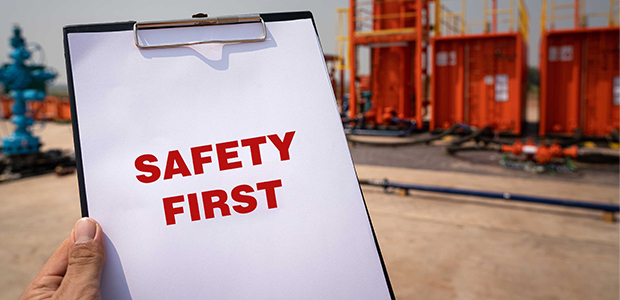
Survey Highlights Benefits Of Promoting Psychological Safety
HOUSTON—A new study from Veriforce suggests that the oil and gas industry and other high-risk sectors could improve employees’ safety and productivity by formalizing their efforts to create environments where employees know they can speak up without fear of punishment or humiliation. It refers to such environments as “psychologically safe.”
“Psychological safety initiatives offer tangible benefits that can significantly reduce incident rates and cultivate genuinely proactive safety cultures,” the study states. “A direct relationship has been observed between an employee’s perceived psychological safety and their propensity for experiencing a work-related injury.”
That relationship is significant. “Research by the National Safety Council indicates that workers reporting psychologically unsafe work environments were 80% more likely to have sustained a work-related injury requiring medical attention or resulting in missed workdays,” the study says.
Citing peer-reviewed journals, the Veriforce study, Psychological Safety in the Workplace, identifies several mechanisms through which psychological safety protects employees. “By emphasizing mental well-being and open communication, psychological safety can indirectly mitigate physical risks associated with stress, anxiety, and disengagement. Supported and heard employees are less susceptible to burnout and exhibit higher levels of job engagement, which can lead to increased attentiveness and adherence to safety protocols.”
Growing Awareness
To assess awareness of psychological safety, Veriforce says it surveyed 212 professionals in safety, training, HR, and leadership roles in sectors such as oil and gas, manufacturing, public services, healthcare, and mining.
“The concept of psychological safety is gaining traction, with 58% of respondents indicating at least some familiarity, including 31% who consider themselves ‘very familiar,’” the company finds. “However, 9% of respondents reported no familiarity at all.”
The study says current awareness has not led to formal policies, with just 16% of those surveyed reporting that their company has a written policy on psychological safety. While an additional 22% said their company was developing a policy, 51% said no policy exists.
“These findings indicate a disconnect between theoretical understanding and practical integration. Organizations may recognize the importance of psychological safety but have yet to institutionalize it through written documentation or policy frameworks.
“This presents a strategic risk, as informal or inconsistent approaches may fail to provide the clarity and structure necessary to support employee trust and accountability,” the study argues.
“Despite widespread recognition of the importance of psychological safety, the majority of organizations still haven’t embedded it in a structured or consistent way,” summarizes study co-author James Junkin, who chairs the strategic advisory board at Veriforce and serves on the advisory board for the National Association of Safety Professionals. “High-risk industries, where voicing concerns can prevent harm, need to move beyond awareness and embed the right leadership behaviors, policies, and training to dismantle cultures of silence.”
Training and Leadership
Veriforce found that training is limited, with 52% of respondents reporting that no formal training or workshops on psychological safety are currently offered at their organization. Almost a quarter of respondents did say their company had training in place either for all employees (19%), for specific teams (2%) or for leaders only (also 2%), and an additional 18% stated training was in development. The remaining 7% were unsure.
The study points to a link between training and improved comfort among workers. “Those at companies with formal training on psychological safety reported an average comfort score of 4.0 out of 5, compared to 3.2 in companies without,” the authors say.
The survey also found a strong correlation between leadership behavior and employee comfort. “These findings align closely with (Harvard Business School) research, which identifies leadership as the primary driver of team-level psychological safety. Tangible leadership behaviors, such as active listening, admitting mistakes, and responding non-punitively, can create the conditions necessary for psychological safety to thrive.”
When asked how well their organization’s leadership promotes and models psychologically safe behaviors, 33% of respondents marked “very well” and 48% marked “moderately well,” while 19% said “not at all well.”
“Nearly 1 in 5 (19%) say their leadership does not actively promote or model psychologically safe behaviors,” Veriforce highlights.
When asked about common barriers to establishing or improving psychological safety, respondents cited “fear of retribution or negative consequences (40%), lack of management buy-in or inconsistent leadership behaviors (30%), production pressure outweighing safety priorities (25%), and poor communication channels or a lack of clear feedback (20%).”
Next Steps
According to Veriforce, the study’s findings indicate an urgent need to give psychological safety the same priority as physical safety.
“Psychological safety is not just an ethical imperative; rather, it’s a strategic advantage,” the study says. “The evidence is clear: when leaders model safe behaviors and when organizations invest in training and supportive structures, employees respond with increased openness, engagement, and proactive risk identification. On the other hand, when fear, pressure, or inconsistency reign, the cost is not only silence but missed opportunities to prevent harm.”
“Psychological safety isn’t just a cultural issue, but a practical one,” Junkin says. “If people don’t feel safe raising concerns or challenging decisions, companies won’t get the full picture on critical risks facing their organizations. Those taking this issue seriously and investing in psychological safety are building safer, more resilient operations.”
To help organizations create and maintain psychological safety, the study closes with five organization-level actions:
1. Implementing training across all leadership levels to promote active listening, empathetic feedback and other valuable behaviors;
2. Reinforcing non-punitive reporting systems that encourage employees to point out potential issues and focus on improvement rather than retaliation;
3. Aligning production and safety objectives to keep performance targets from compromising safety;
4. Enhancing policy accessibility and communication by, for example, leveraging digital tools and illustrating concepts with relatable examples; and
5. Monitoring psychological safety levels.
For more details on these recommendations, as well as the survey’s findings, see Psychological Safety in the Workplace: Insights and Actions from a Cross-Industry Survey.
For other great articles about exploration, drilling, completions and production, subscribe to The American Oil & Gas Reporter and bookmark www.aogr.com.






